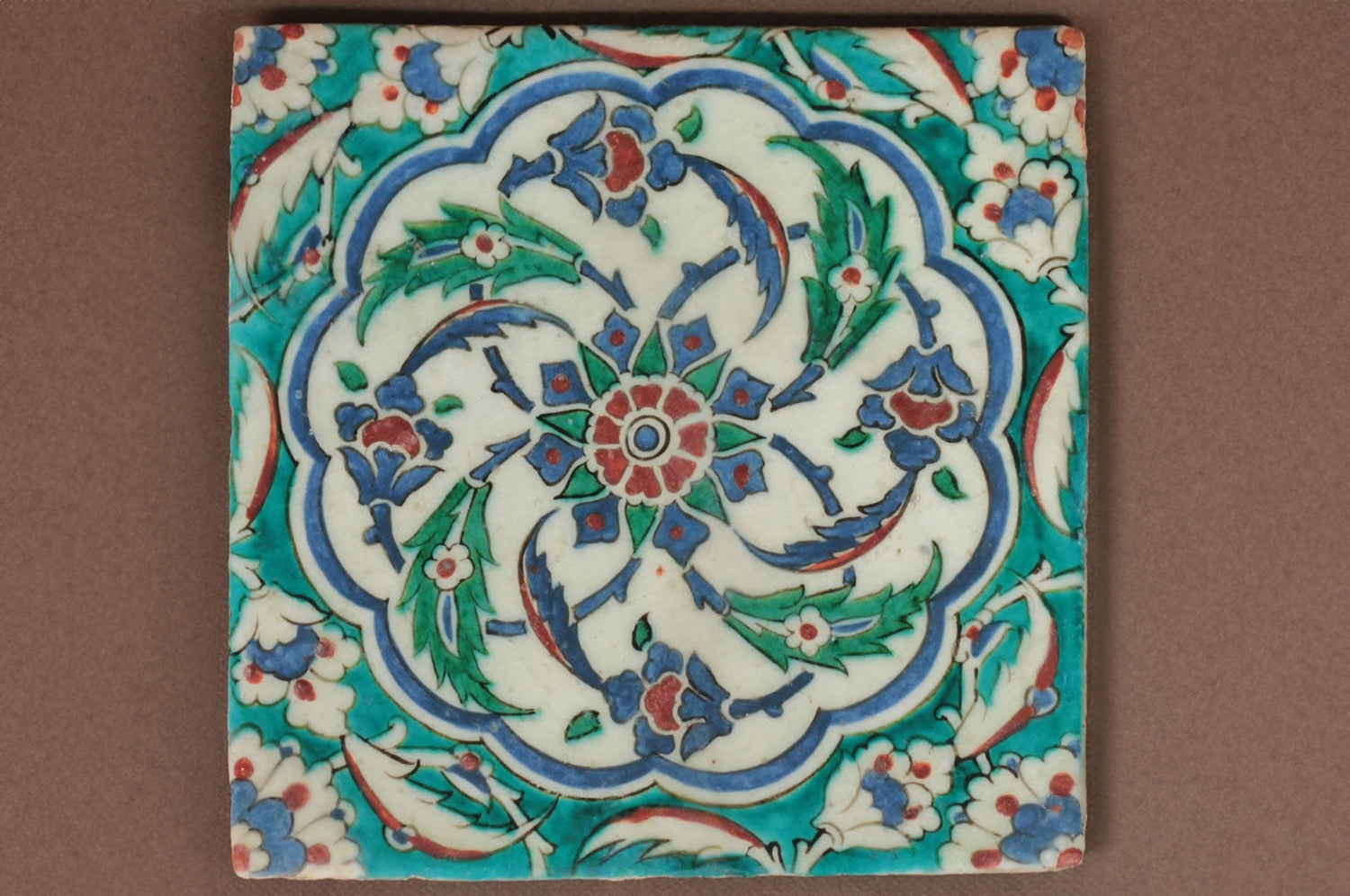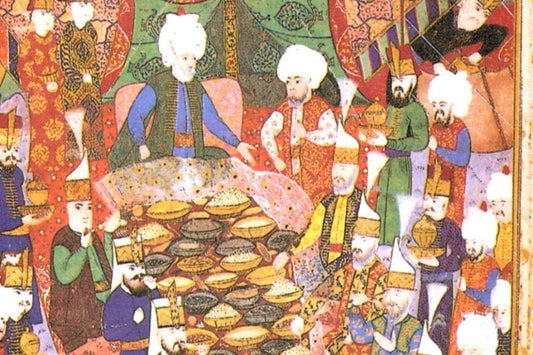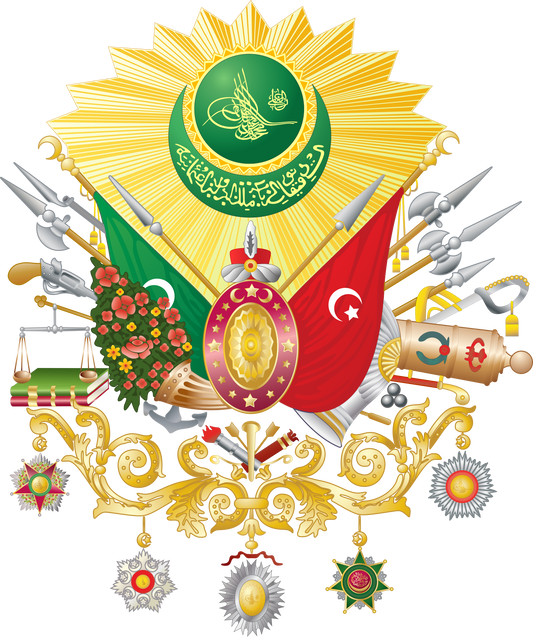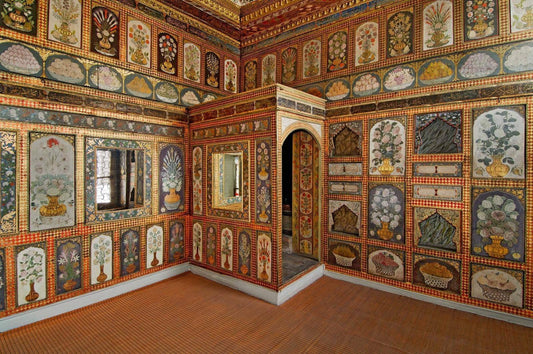Step into the captivating art world of the Ottoman Empire: here, beyond individual lines and patterns, you'll discover the depths of a visual sense of harmony and order. The motifs central to the elegant fabric of Ottoman art not only offer aesthetic pleasure but also create a sense of circular balance and order. These motifs, defined by radial lines and radiating from the center, have gained a distinctive place in Ottoman art as a form of organization. While these symmetrical and rhythmic lines share similarities with the orientalized styles of ancient Greek art, they depart from the rigidity of geometric forms and offer a unique aesthetic.
Aesthetics and Balance: Visual Harmony of Ottoman Motifs
Central motifs in Ottoman art were frequently enriched with elements drawn from nature. 16th-century Iznik ceramics, in particular, offer rare but impressive examples of these central motifs, featuring naturalistic floral patterns inspired by nature. While these designs may appear abstract at first glance, attention to detail reveals radial lines filled with flowers. For those interested in this type of design, you can explore our collection of products featuring naturalist designs on our website. This collection reinterprets this distinctive aspect of Ottoman art for modern use.
Traces of Nature in Iznik Ceramics: Naturalistic Floral Patterns
The round medallions on 16th-century cushion covers have a similar arrangement, evoking a sun-like appearance. In some designs, the radial arms emanating from the central rosette flower take on forms reminiscent of peacock feathers or natural flower stems.
Symmetry and Rhythm: Geometric Mastery in Ottoman Art
Central motifs are considered one of the forms that best express unity in Ottoman art. For this reason, they were frequently used on the backs of round objects, especially mirrors. Ottoman mirrors were often decorated with precious stones and were designed in a circular shape, without a handle. The radiating centerpiece is disproportionate to the mirror's dimensions, and is framed by a separate frieze around it, defining the boundaries of the central area. This sun-like design may symbolize the relationship between the mirror, the heart, and the sun in Sufism and Divan poetry.
Cultural Reflections: Central Motifs in Ottoman Mirrors
These central motifs in Ottoman art represent a rich visual and cultural heritage, and their place in art history helps us better understand the meaning and significance of each detail. Every detail in these works of art opens a window into the depths of history and culture.
The Power of Central Motifs: The Enduring Influence of Ottoman Art
The central motifs of Ottoman art discussed in this article offer a timeless aesthetic and cultural richness. This artistic journey, spanning from antiquity to modern times, demonstrates that motifs are not merely visual elements but also carriers of a cultural and historical legacy. These works of art, ranging from Iznik ceramics to Ottoman mirrors, both recall the past and carry this rich heritage into the present. These unique motifs of Ottoman art take on a new life and meaning in the modern world, thus transmitting the art of the past into the future.




